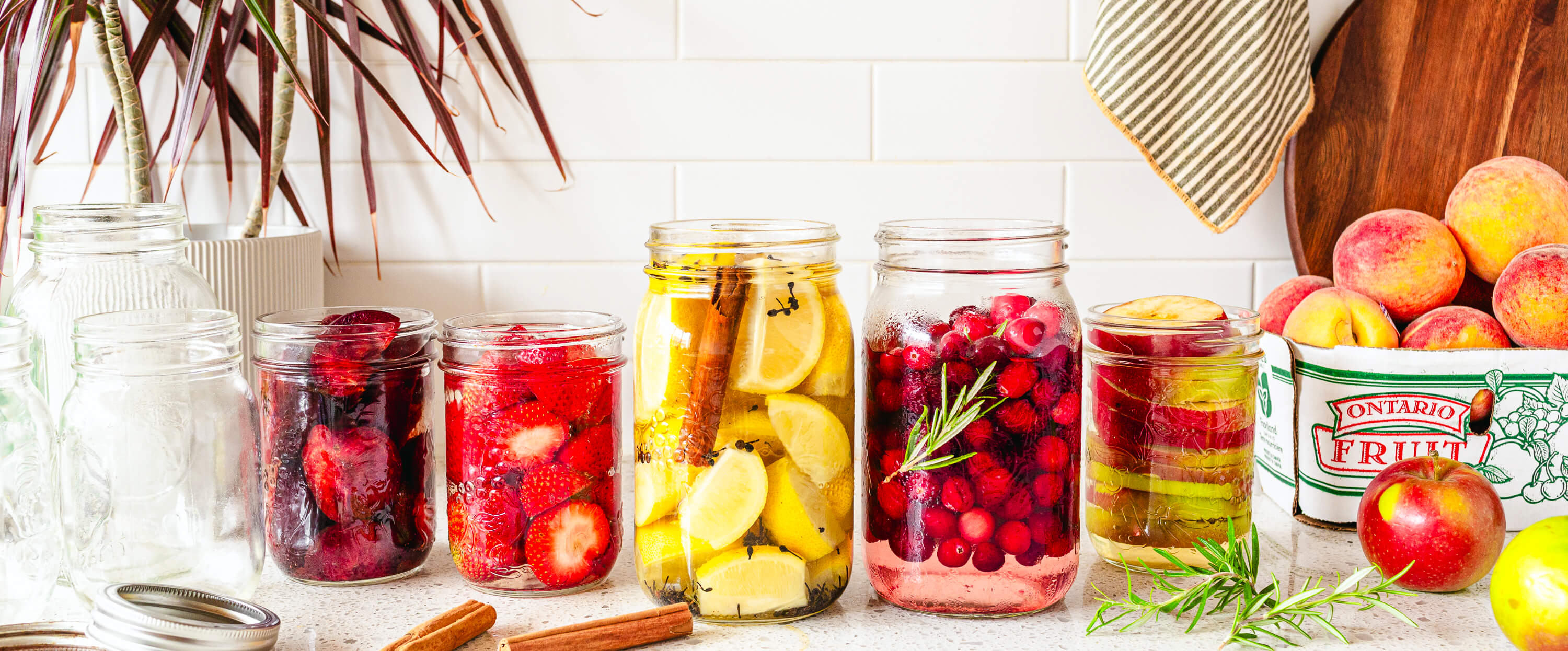Twelve ways to preserve summer fruit freshness!
When summer fruits are at their peak, there’s literally no time to waste. You have to eat them by the handful and fill your fridge, fruit bowls, and recipes with as many as possible before the oh-so-sweet, oh-so-brief moment is gone. But there are many ways to extend fruit season into the wintery months - which is why we’ve created this preservation guide.

The perfect match for your morning toast (and so much more).
Jam: You know it, you love it - this jelly-like spread is made with chopped fruit cooked down in sugar and water. All kinds of fruits make excellent jams, from berries and apples to citrus and stone fruit.
Fruit spread: Same same as jam but different. There’s no sugar added - leaving it all up to the fruits’ sweetness! But if you do find it’s missing a little sweetness, a splash of juice should do the trick.
Jelly: Jam and jelly may be used interchangeably, but one extra step makes a big difference. You have to strain the liquid to remove any pulp, leaving a super smooth, spreadable texture. And although you could make it with any kind of fruit, you’ll have more success with pectin-rich crops that gel easier like rhubarb or berries.
Marmalade: Made with fruit cooked down in sugar and water, this special mix stars lemons, limes, grapefruits, oranges - peel and all! This technique leaves you with a thicker, tangy yet sweet spread.
Chutney: Made from a blend of fruit, veg, sugar, vinegar, and spices, chutney is the perfect pairing for curries, along with grilled meats (as a topping or a marinade).

Take your desserts to new heights.
Curd: If you have plenty of citrus and berries, you can turn them into a creamy custard-like topping. They’re super simple to make, all you need is egg yolks, sugar, fruit juice, and zest. This homemade spread is a must in sweets, from curd-filled puff pastries and berry parfaits to Dutch babies and meringue pies.
Fruit butter: This spread requires heating and blending of the entire fruit. For when you overestimate your appetite when apple picking, fruit butter works best with apples, pears, and stone fruit. Adding some seasonal spices for extra flavour, you’ll end up with a smooth, puréed mixture that you can enjoy on anything from toast and ice cream to oatmeal and cakes.
Confit: Also known as candied fruit, you can guess by its name that it’s a French preservation technique. The smaller the fruit, the easier it’ll be, but whole pears, apples, and citrus peels will work just fine. Slow cook your fruit in a sugary syrup, and before you know it, they’re candied and ready to add to your cakes.

Ready-to-eat for an instant dose of summer.
Compote: Unlike fruit butter, which is made with blended fruits, compotes are made with sliced or cubed ones. Fruits like apples, rhubarb, and berries are cooked down in a spiced sugar water mix until they reach a soft texture. Enjoy by the spoonful, on top of ice cream, or on your pancakes.
Canning: The high acidity of stone fruit, apples, strawberries, and blueberries makes them perfect for canning. Your preserves will be jam-packed with either whole or sliced fruit and preserved with sugar syrup. Gather your supplies, follow the Government of Canada’s food safety guidelines, clear some room in your cupboard, and enjoy biting straight into peak summer fruit year-round.
Pickling: With a simple sugary brine and spices of your choice for infused flavour, this is a not-so-common take on preserving your fave fruits. We’re talking watermelon, apples, figs, lemons, pears…just make sure they’re at peak freshness and avoid pickling overripe fruits. The taste will depend on what you infuse them with, but they’re usually sweet and tangy. You can store your pickled fruits in the fridge or make them shelf stable by following the canning process.
Fermenting: Similar to pickling, it’s pretty easy to ferment things like stone fruit, citrus, and berries. You can choose between fermenting with salt or a sugar brine, depending on your taste - either giving you a salty or sweet batch with a tanginess similar to sauerkraut. Once the cold weather hits, open up a jar of your fave fermented fruit and enjoy it as is, turn it into a mash, or top off your ice cream with it.
Happy preserving!
